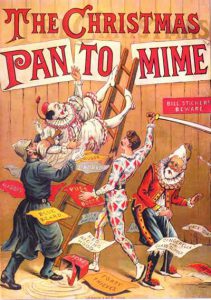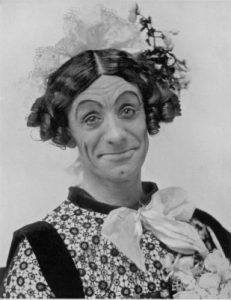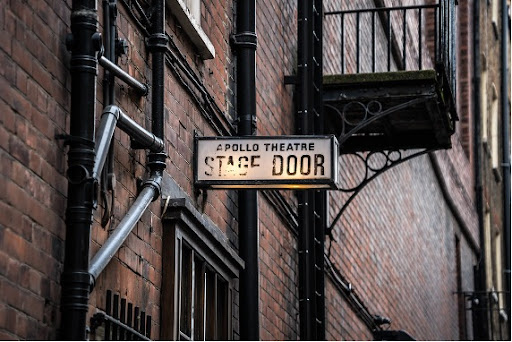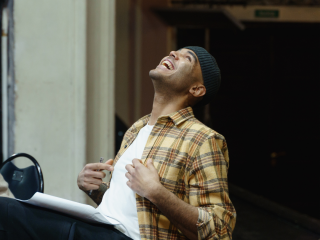With the holidays upon us, the pantomime season has well and truly taken over in the United Kingdom and is growing with increasing popularity across the world, particularly in Canada, Australia, and South Africa. There are traditional pantomimes, rock ‘n’ roll pantomimes, modern retellings of traditional pantomime fairy tales…the list goes on! While you might be familiar with the traditional dame character, the principal boy and girl, and the comical songs and dances, where do these traditions come from? And if these stock characters are completely alien to you, then read on! How did the traditional pantomime entertainment come into being?
So, in the spirit of the season, let’s take a fun look at the history of one of the UK theatre’s most entertaining genres and how it has evolved today.

Where Did Pantomime Come From?
Pantomime is not just a popular modern entertainment – its roots date back to classical theatre and these influences can still be found in pantomime today. The first British pantomimes had their basis in the early Italian genre of Commedia dell’arte. This popular form of theatre was found in Europe from the sixteenth to the eighteenth century and featured a group of masked actors performing improvise-based sketches. Like today, there were exaggerated stock characters that featured regularly in each sketch. These included the Pantalone (the old man), the Innamorati (young lovers) and, later on, the comical Harlequin (first known as Zanni). The English version of this entertainment was called the harlequinade, and featured a clown, the pantaloon, eloping lovers, and the emergence of what we would now identify as slapstick. The word pantomime was used from the early 1700s, but these short productions were silent mime shows and not recognizable as the panto we know today.
By the Victorian era, the modern pantomime emerged as a popular theatrical genre and extravagantly successful productions at London’s Theatre Royal Drury Lane. These pantomimes featured leading music hall stars of the time, including Dan Leno, Marie Lloyd, Little Tich, and Vesta Tilley. The theatre’s famous manager, Augustus Harris, produced and wrote shows that became the most popular holiday entertainments in London during the late 1800s, and shaped the modern pantomime.
Today, the most spectacular London pantomime can be found at the London Palladium. After a regular run of Christmas pantomimes throughout the twentieth century until 1987, the theatre relaunched its pantomime season in 2016 with productions that aim for the wow factor, in both their budget and their star casting. Over the last six years, some of the UK’s most famous musical theatre performers have emersed themselves into the pantomime world, including Elaine Paige, Beverley Knight, Gary Wilmot, and Charlie Stemp.
In fact, it has become common place for many regional pantomimes to feature stars of the West End in their seasonal productions. This year, Ruthie Henshall (best known on Broadway for Chicago and Miss Saigon) is appearing in Snow White and the Seven Dwarfs in London’s New Wimbledon Theatre, Carrie Hope Fletcher (Andrew Lloyd Webber’s original Cinderella in his recent London production) is in Sleeping Beauty in Canterbury, and Keala Settle (Waitress and The Greatest Showman) stars in Northampton’s Jack and the Beanstalk.
And the list goes on! Even the great Sir Ian McKellen is leading the touring cast of Mother Goose!
But this is not a new craze….oh no it isn’t! For example, did you know that Julie Andrews and Max Bygraves appeared together in the London Palladium’s 1953/54 production of Cinderella? (The pantomime, remember, not the musical!!)
By the way, if you’re confused why we keep randomly inserting “oh no it isn’t” into this blog post, here’s your answer! A standard, audience participation call and response in pantomime is for one of the characters to state a “fact” and the audience (encouraged by other characters on stage) to respond with “oh yes it is” or “oh no it isn’t” accordingly. And then repeat for as long as the cast encourages it … it gets very loud!
Traditional Pantomime Stories
Although pantomimes are traditionally performed at Christmas, most pantomime plots have no direct relevance to Christmas at all! Instead, they are usually based on traditional children’s stories, with fairy tales being the most popular choice. In more recent years, Cinderella and Aladdin have battled for top panto choice, with Jack and the Beanstalk, Snow White, Sleeping Beauty, Babes in the Wood, Dick Whittington, and Peter Pan being popular choices also.
These stories work really well in the pantomime format as they follow the basic plot progression:
- An introduction to a happy, friendly family/village/kingdom!
- The hero or heroine is under threat!
- The threat gets worse!
- A possible savior is introduced!
- A battle between good and evil takes place!
- The evil is dispersed and the hero/heroine is reunited with their true love!
Who’s Who in the Modern Panto?
There are several stock pantomime characters that we have come to expect to see on the pantomime stage. The first one most people think of is the Dame. Normally played by a man (but not as a saucy ‘drag’ role), she is over-the-top, quick witted, and has a questionable taste in clothing. The Dame carries the comedy in the pantomime and interacts extensively with the audience. Indeed, you are positively encouraged to shout out and participate vocally as loudly as you possibly can!

Next there are the principal boy and principal girl, who are either the title role or their star-crossed lover. They are attractive, brave, kind, and ALWAYS succeed in the end!
Adding to the comedy, and supplying many of the one-line gags, is the Simple Simon role. He is friendly, not particularly bright, and often hankers after the principal girl. Popular roles of this kind are Buttons in Cinderella and Wishee-Washee in Aladdin. Finally, there are, of course, the villain and the goody! How can you have a pantomime without a wicked stepmother or an evil sheriff? Or indeed a fairy godmother to make everything ok!
Fun Facts About Pantomime Traditions
Did you know……..
- Traditionally, the last lines of the pantomime are in rhyming couplets and should only be spoken for the first time on opening night!
- One strict pantomime rule–the villain must enter and exit stage left, and the goodies from stage right. This tradition has its roots in medieval mystery plays, where the left of the stage represented hell and the right was heaven.
- The tradition of a male playing the Dame first appeared in the early 1800s. The famous clown, Joseph Grimaldi, is the first to be recorded as playing the Baron’s wife in Cinderella in 1820.
- A popular gag in modern pantomime is the ghost routine. This usually involves the Dame and one or more other characters being left on stage in a lonely situation (imagine a haunted forest or a dark castle). A ghost appears (“It’s behind you!”) and scares the characters offstage one by one. Ultimately, the Dame is left to face the ghost, but this time the ghost flees in terror!
- A ‘slosh scene’ is a popular comedy scene that involves making a mess. Custard pies, wallpaper paste, and water are all popular choices. However these scenes are more difficult to stage than they sound, as they require perfect comedic timing to be effective. Not to mention cleaning the stage straight away afterwards!
- Recognize traditional elements of pantomime in popular shows today? The Mystery of Edwin Drood draws extensively on the British pantomime traditions with the cross-dressing hero, the bad guy, and fool! One Man, Two Guvnors also makes the most of pantomime’s interactive elements, inviting audience members up on the stage and interacting with the audience to keep the plot moving along. Which other ones can you think of?
So there we have it, a whistle stop tour through the history and evolution of the modern day pantomime. All that remains is to get into the festive spirit, sit back, and prepare to join in boos, hisses, and cheers!















2 comments
I always thought pantomimes involved strictly non-verbal performances. Am I incorrect in my assumption?
British pantomime is a historic theatrical tradition that is very, very vocal and lots of fun! You may be confusing it with mime performances (often referred to in the US as pantomime).